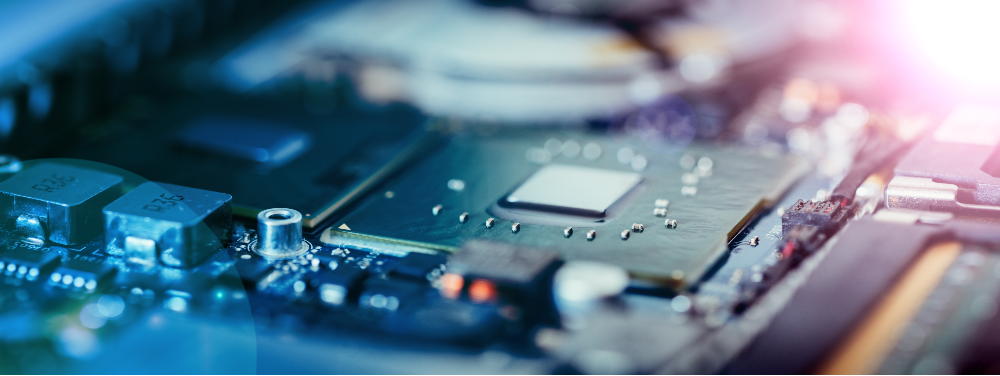The term “semiconductor” became ever more popular in 2020/2021 with news of the semiconductor shortage. Over the last seven decades, it became the backbone of electronic device manufacturing.
Semiconductors are considered the heart of modern electronics and their manufacturing, as they help electrical devices process information as efficiently and compactly as possible.
The industry is highly competitive, after all — sales are expected to go up to $527.2 billion worldwide, and the growth rate in 2021 is predicted to reach 8.4%.
Here’s what to know about semiconductors, what they’re used for, and more commonly asked questions.
What Is a Semiconductor, and What Are They Used for?
Before going into the discussion, let’s start with what a semiconductor is. Materials used in electronics manufacturing are classified into three groups — conductors, insulators, and semiconductors — based on their capability to conduct electricity.
Simply speaking, semiconductors are materials that conduct only part of a current — meaning they aren’t a full conductor of electricity, nor are they insulators, but they have the characteristics of both.
A semiconductor’s conductivity can be altered to meet whatever specific conductive needs the product must meet, therefore making it a very customizable material.
Semiconductors are also known as “semis” or “chips,” and they’re used in electronics manufacturing to support the functionality of electronic devices.
Manufacturers primarily use them in smaller devices, like smartphones, computers, watches, TVs, medical devices, and gaming equipment. Devices using semiconductors are notably compact, reliable, have high power efficiency, and offer low-cost solutions when manufacturing electronic products.
Semiconductors can be separated into four different groups: memory chips, commodity integrated circuits, microprocessors, and complex “systems on a chip.”
How Does a Semiconductor Differ From a Conductor or an Insulator?
As already mentioned, a semiconductor is a material that is neither a conductor or insulator but has the characteristics of both. Let’s dive deeper into the behavior of each matter.
The material in a conductor permits electrons to stream freely from atom to atom. A conducting object will allow a charge to transfer throughout the whole surface of the object.
On the other hand, insulators are materials that obstruct the flow of electrons from particle to particle. When the charge is transmitted to an insulative object, the excess amount stays at the initially charged spot, as the insulators don’t permit the free flow of electrons.
A semiconductor lies somewhere in between an insulator and conductor. Its conductive abilities are limited, but the semiconductor is still not as obstructive to electricity flow as an insulator.
Metals usually make good conductors, so you can often find copper or aluminum in electrical wiring. On the other hand, wood, paper, rubber, and glass have very bad to nearly non-existent electrical conductivity.
Semiconductors are typically made out of silicon (Si), the second-most-common element on earth. The end product is known as a silicon wafer — a thin slice of semiconductor made out of crystalline silicon which is later used as a substrate for building microelectronic devices.

Who Invented the Semiconductor?
Semiconductors were not invented as much as they were discovered. And while the material itself was not developed, there were many inventions of semiconductor devices. The finding of this material was a real breakthrough that allowed the electronics industry to advance significantly.
The usage of semiconductors made it possible for electronic devices to be smaller and as miniature as they are today. Semiconductive material is also used in parts like transistors, diodes, and photovoltaic cells.
Alessandro Volta was the first to use the term “semiconducting” in 1782, and Michael Faraday was the first one who observed a semiconductor effect in 1833. What Faraday discovered was that the silver sulfide electrical resistance lowered with temperature. In 1874, almost a hundred years later, Karl Braun discovered and noted the first semiconductor diode effect.
The first semiconductor device was patented in 1901, and it was named “cat whiskers.” Jagadis Chandra Bose invented it, and the machine was used to detect radio waves.
In 1947, the transistor was co-invented by John Bardeen, Walter Brattain, and William Shockley at Bell Labs.
Why Is There a Semiconductor Shortage?
Different circumstances affect the shortage of electronic components, especially semiconductors. Essentially, it was caused by the trade war between the U.S. and China that began in 2018 and continued into 2021.
The coronavirus outbreak hasn’t helped, either. With people staying home and working there as well, the need for electronic devices such as laptops and phones skyrocketed. People needed more electronics for work and entertainment, and electronic device manufacturers couldn’t keep up.
If you’re interested in how you can save your company from semiconductor shortages, you can read more about the current shortage here.
What Is a Semiconductor Company?
A semiconductor company manufactures semiconductors or electronic products. They’re also called electronics manufacturers (EMS).
If you’re looking for an EMS company to work with for your semiconductor or electronics product — here is what to look for in an EMS partner before signing on the dotted line.
